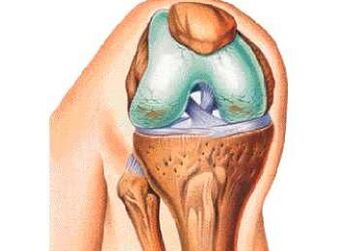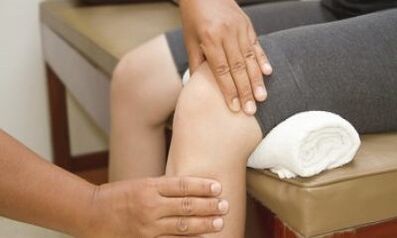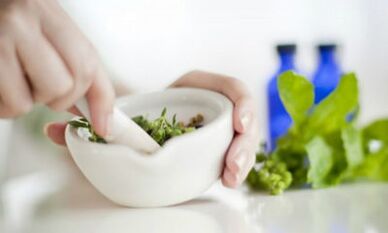Arthritis or osteoarthritis of the knee is a disease that occurs on the basis of nourishing changes with the next development of connective tissue.There are many factors that affect the development of the disease, but they eventually lead to violations of the metabolic process in cartilage.In medical documents, knee joint disease is called Gonarthrosis.
According to statistics, Gonarthrosis occupies a leading position in frequency of occurring between other arthritis diseases.The disease causes serious discomfort, can develop into pain and rest.
Knowledge of initial symptoms will help doubt the development of pathology and cure it in the early stages.
Reason
According to medical classification, there is the main and secondary gonarthrosis or arthritis of the knee joint.
The knee arthrosis may occur on the background of various diseases or act as their complexity.When, due to an unclear history or clinical image, the exact cause cannot be established, Gonarthrosis is called the main, but if the cause is known, such arthritis is called secondary.
On average, age development in most people, on average, this period starts after 45-50 years of life.
The course and pathology of Nguyen Phat and secondary arthritis are the same and does not depend on the cause.
The most common causes of arthritis and osteoarthritis of the knee joint are:
- Knee injury damage;
- Deforming joints in and outside;
- shorten a lower limb;
- Abnormal hypertension of joints;
- chondroblast dysplasia;
- Calcinosis of cartilage;
- Osteoarthritis of femur and tibia;
- Rheumatoid arthritis or arthritis of any other cause;
- Glucose metabolism;
- Metabolic disease and hormonal disease.
Injury.After receiving the knee injury in the general cavity, the inflammatory condition with the great gravity of the Aliteration may develop.After disappearing of inflammatory agents, compensation or arthritis is activated.
Typically, the disease occurs on the background of a fracture with a ligament and damage to the bag and the cartilage surface of the joint.

Congenital deformation.Valgus deformation or variant is found very often and there is no appropriate adjustment may be complicated by knee sclerosis changes.This happens due to the fact that one of the knees falls more than the load than the necessary level.
Shorten any lower limb.As with deformations, in the pathogenesis of the development of the disease, the weight distribution is improperly on the knee.
Hypermors of the knee.In this state, the wear and tear of the cartilage of the knee joint can occur with the next degeneration and degeneration into arthritis.Hypermorsion often leads to the dislocated arthritis and sprains of the joint capsule.
DYSPLASIA.Due to the inappropriate development of the engine surface in the knee joint, the pathological growth of connective tissue occurs.
Calcinosis of joints.Pathogens are based on the deposition of salt into the joint cavity and the formation of a specific precipitate, causing calcification with the next osteoarthritis.
Osteoarthritis.Bacterial disease causes inflammation in which the destruction of bone and joints occurs.First, ankyl disease and only then sclerosis is formed.
Arthritis of any cause.The most dangerous is rheumatoid arthritis, accompanied by autoimmune damage of heart and joints.
Diabetes, like metabolic disorders, leads to violations of nutrients into the joints and sprouts of cartilage.
Obesity.With large weight of the body, large loads on the knee when walking and in a standing position.Due to continuous pressure, blood flow to the knee joint decreases and atrophy when dysplasia develops.
Symptom

Symptoms with knee joint disease depend on the stage of the pathology.Based on this, analyzing their symptoms and growth, you can assess the size of changes in cartilage tissue.
Symptoms of knee arthritis:
- the presence of pathological sound during the movement;
- pain after loading or resting;
- reduce function;
- edema and joint increase;
- Pathological dislocations, fractures and sublimation;
- The temporary dam can occur when bending and joint expansion.
The click and crisis are not noticed immediately, and if they notice, they don't pay attention.Pathological sound encountered the idea that a pathological process with the deposition of salt or the formation of bone cells occurs during cartilage distance.
Pain occurs due to the formation of calcinates or osteoporosis.At first, the pain syndrome was not manifested, then only appeared in the morning and passed after lunch, with the progression of the disease, the pain may occur when resting.
The reduction of joint function is manifested at the hardness of the motion and reducing their amplitude.Depending on the stage, the constraints of the movements may last for a certain time and overcome when resting.
The edema occurs due to inflammation and excess of the fluid fluid.There are also options when the skin is inflamed on joints.Such symptoms may be with bright red or rheumatism.
Deviation and sublimation occur due to the process of applying the bones and ligaments of the knee.
The clushing is a condition in which motion in any axis is completely limited.Such symptoms show the evaluation of the process and the need for complex treatment.
The degree of arthritis

Classification of osteoarthritis by the following signs:
- Symptoms of X -ray;
- Clinical manifestations;
- Laboratory data.
The most popular and convenient classification is X -ray, it is simple and easy to understand even for those who do not have health education.
Based on X -RAY
- Reducing joint distance is small, and no osteoporosis;
- The distance between points is not teded, but there are signs of calcinates or small osteoporosis;
- The distance between points has a narrow manifestation, with bone cells and common deformations;
- Lack of joint distance, bone deformation, ankylose and dysplasia.
Regarding the clinical picture, the following stages are distinguished:
- Symptoms are negligible, occurring in the morning and over 30-60 minutes after waking up;
- The average level is a clear symptom, uncomfortable feeling passes before lunch, insignificant swelling, it progresses rapidly without treatment;
- A severity - characterized by constant pain, discomfort when resting, morning hardness until dinner, ankyloza, burgis and sinusitis of the knee joint grow.
Laboratory tests are taken into account, the indicators of soy and white blood cells are assessed.It is also necessary to check the presence of a rheumatism.
Diagnostic method
Diagnosis of knee joint disease is not complicated, but requires certain skills from a doctor.
Two types of diagnostic measures are distinguished:
- Laboratory diagnosis;
- Diagnosis of tools.
For accurate diagnosis, each method should be taken into account and analyzing the entire picture.
Laboratory
If suspected arthritis, the doctor will prescribe the following tests:
- Blood and urine tests in general;
- Biochemical testing;
- Determine antibodies with rheumatism;
- Determine antibodies for their own cells.
The laboratory data does not perform information about the development stage of the disease.
Tool

Diagnosis of arthritis tools includes the following methods:
- X -ray in two standard projections;
- Minimally invasive endoscopy;
- Check Uzd;
- CT;
- MRI;
- Scintigraphy (as directed).
Radiation diagnosis aims to determine changes in joints and to assess cartilage status.
Treatment
Treatment of knee joints is a long process.The treatment time is due to the fact that the reproduction of cartilage tissue occurs very slowly, and in some cases, it is absolutely impossible to restore joints.
Modern joint treatments in the knee include comprehensive measures to eliminate inflammation, normalize lifestyle and improve the metabolism of cartilage tissue.
There are such treatments:
- Drug therapy;
- Exercise and massage;
- folk medicine;
- Surgical intervention.
The doctor prescribes treatment based on the time of the disease, the stage of development and its clinical manifestations.
Drugs
Treatment with drugs for pain relief and inflammatory reaction.For this purpose, the following drugs are prescribed:
- No inflammation;
- chondroprotector;
- glucocorticoid;
- cytology.
The tablet from the joint of the knee joint has many side effects, in treatment, it is necessary to monitor the state of the gastrointestinal and kidneys.
Typically, drugs for arthritis are prescribed for a long time, so it is advisable to choose the least toxic drugs.
Exercise
Treatment of muscle diseases by using exercise therapy for the purpose of enhancing the muscles and ligaments of the knee.With the dosage load in the cartilage of the disease, the metabolism is improved and the regeneration processes are accelerated.
The exercises should be selected individually to take into account the stage of the patient and physical ability.
Massage
Knee joint massage allows you to improve blood flow and reduce discomfort.Suitable massage can prevent the appearance of ankyloses and fake joints.
Folklore
Treatment of knee joint muscles at home is not the main method to combat pathology, or can only act as a supplement for the drug.

House treatment includes:
- reduce body weight;
- Normal chemical occupational hygiene and compliance with the regime at that time;
- The fight against inflammation.
Anti -inflammatory effects are owned by such herbs:
- Prohibition from thyme and St.John's Wort;
- Leaves burden;
- white cabbage leaves;
- Infusion and decoction from dandelion and chrysanthemum.
Work
The activity is prescribed with the ineffective conservative therapy or at the request of the patient.One of the main indications for surgical intervention is the 4th stage of the disease due to X -ray characteristics.
During the surgery, surgeons can completely replace joints with endrosthis or change one of its parts.
























